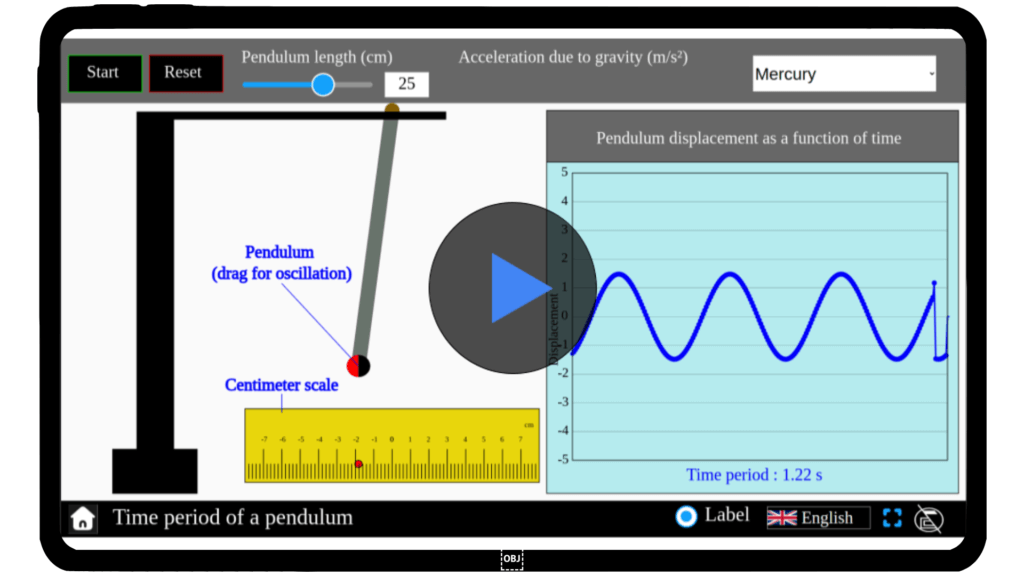Time period of pendulum simulator
Explore the motion of pendulums interactively: discover the relationship between length, gravity, and time period with our engaging simulator!
Time period of pendulum
Pendulums have fascinated scientists and engineers for centuries, from simple clocks to advanced physics experiments. But what governs their motion? Dive into the world of pendulum mechanics with our interactive simulator. Adjust the length, experiment with gravity, and observe how these factors influence the time period. Unravel the principles of harmonic motion and see physics in action — start your exploration today!
\( T = 2\pi \sqrt{\frac{L}{g}}
\)
Mathematical description
where:
- \( T \) is the Time period (time for one complete oscillation)
- \( L \) is the Length of the pendulum (distance from the pivot to the center of mass of the bob)
- \( g \) is the Acceleration due to gravity
Simulator
Drag the bob of the pendulum and experiment with the parameters to observe how time period of pendulum gets affected.
Interactive Physics Simulator – Pendulum Time Period
🌟 You May Also Like
Suggested experiments and activities based on your progress...
